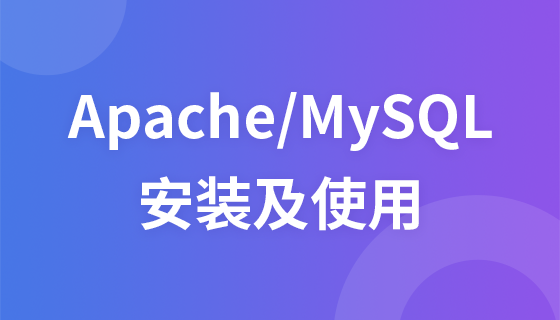
StructType 类提供了 exists 方法,该方法接受一个谓词(Predicate)作为参数。这个谓词会应用于 schema 中的每个字段,如果至少有一个字段满足谓词条件,exists 方法将返回 true。这种方法非常灵活,可以用于检查字段名,也可以用于评估其他条件。
import org.apache.spark.sql.Row;
import org.apache.spark.sql.types.StructType;
import org.apache.spark.sql.types.StructField;
import org.apache.spark.sql.types.StringType;
// 创建一个示例 Row
StructType schema = new StructType(new StructField[]{
new StructField("id", StringType, false, null),
new StructField("title", StringType, true, null)
});
Row row = Row.fromSeq(new Object[]{"123", "Example Title"});
// 检查 schema 是否包含名为 "title" 的字段
boolean containsTitle = row.schema().exists(f -> "title".equals(f.name()));
System.out.println("Schema contains 'title': " + containsTitle); // 输出: Schema contains 'title': true
// 检查 schema 是否包含名为 "nonExistentField" 的字段
boolean containsNonExistentField = row.schema().exists(f -> "nonExistentField".equals(f.name()));
System.out.println("Schema contains 'nonExistentField': " + containsNonExistentField); // 输出: Schema contains 'nonExistentField': false注意事项:
StructType 类的 getFieldIndex 方法返回一个 Option 对象。如果 schema 中存在指定的字段名,则 Option 对象包含该字段的索引;否则,Option 对象为 None。我们可以通过 isDefined() 方法来判断字段是否存在。
import org.apache.spark.sql.Row;
import org.apache.spark.sql.types.StructType;
import org.apache.spark.sql.types.StructField;
import org.apache.spark.sql.types.StringType;
import scala.Option;
// 创建一个示例 Row
StructType schema = new StructType(new StructField[]{
new StructField("id", StringType, false, null),
new StructField("title", StringType, true, null)
});
Row row = Row.fromSeq(new Object[]{"123", "Example Title"});
// 检查 schema 是否包含名为 "title" 的字段
Option<Integer> titleIndex = row.schema().getFieldIndex("title");
boolean containsTitle = titleIndex.isDefined();
System.out.println("Schema contains 'title': " + containsTitle); // 输出: Schema contains 'title': true
// 检查 schema 是否包含名为 "nonExistentField" 的字段
Option<Integer> nonExistentFieldIndex = row.schema().getFieldIndex("nonExistentField");
boolean containsNonExistentField = nonExistentFieldIndex.isDefined();
System.out.println("Schema contains 'nonExistentField': " + containsNonExistentField); // 输出: Schema contains 'nonExistentField': false注意事项:
StructType 类还提供了 fields() 和 fieldNames() 方法,分别用于获取 schema 中的字段数组和字段名数组。我们可以直接遍历这些数组,来检查字段是否存在。
import org.apache.spark.sql.Row;
import org.apache.spark.sql.types.StructType;
import org.apache.spark.sql.types.StructField;
import org.apache.spark.sql.types.StringType;
import java.util.Arrays;
// 创建一个示例 Row
StructType schema = new StructType(new StructField[]{
new StructField("id", StringType, false, null),
new StructField("title", StringType, true, null)
});
Row row = Row.fromSeq(new Object[]{"123", "Example Title"});
// 检查 schema 是否包含名为 "title" 的字段
String[] fieldNames = row.schema().fieldNames();
boolean containsTitle = Arrays.asList(fieldNames).contains("title");
System.out.println("Schema contains 'title': " + containsTitle); // 输出: Schema contains 'title': true
// 检查 schema 是否包含名为 "nonExistentField" 的字段
boolean containsNonExistentField = Arrays.asList(fieldNames).contains("nonExistentField");
System.out.println("Schema contains 'nonExistentField': " + containsNonExistentField); // 输出: Schema contains 'nonExistentField': false注意事项:
本文介绍了三种常用的方法来检查 Spark Row 对象的 schema 是否包含特定的字段名:exists 方法、getFieldIndex 方法以及 fields() 和 fieldNames() 方法。选择哪种方法取决于具体的场景和需求。exists 方法最为灵活,可以用于评估复杂的条件;getFieldIndex 方法可以直接获取字段的索引;fields() 和 fieldNames() 方法则提供了直接访问字段数组的能力。希望本文能够帮助您更好地处理 Spark 中的数据。
以上就是如何检查 Spark Row 或 Row.schema 是否“包含”某个字段名?的详细内容,更多请关注php中文网其它相关文章!

每个人都需要一台速度更快、更稳定的 PC。随着时间的推移,垃圾文件、旧注册表数据和不必要的后台进程会占用资源并降低性能。幸运的是,许多工具可以让 Windows 保持平稳运行。




Copyright 2014-2025 https://www.php.cn/ All Rights Reserved | php.cn | 湘ICP备2023035733号